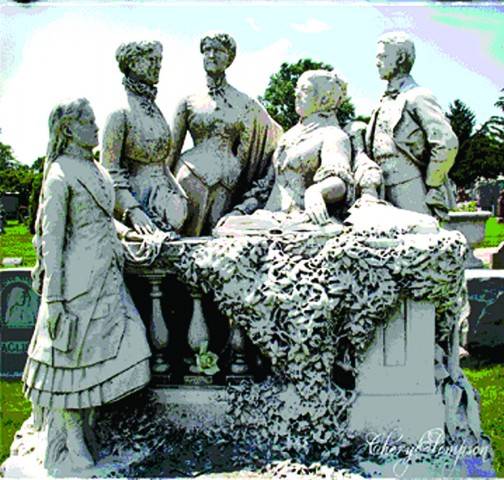
The Italians are, without doubt, a most illustrious nation. Besides being custodians of the epicenter and the heritage of the ancient Roman Empire, they are the progenitors of the Renaissance that spurred growth of art and sciences in Western Europe. Italians have many distinctive and well known creative attributes -including making great wine and olive-oil pickles, both of which this scribe has imbibed in plenty. A stay of about four years, spread over five visits in the last decade, in Griffith, Australia, where a sizeable Italian community resides, introduces one to another of Italian ingenuity, which is their cemeteries.
The Catholic part of Griffith cemetery, that for most part is a burial ground for the Italians, attracts attention during the day due to the many artificial and fresh flower bouquets placed next to each grave, and during the night by several solar battery-powered lights illuminating scores of graves. Each grave is evidently visited often; a loving reminder that its occupant is not forgotten.
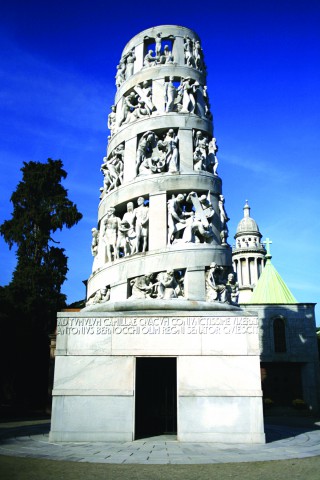
Most Italians are followers of Catholic branch of Christianity, which is expected considering that Vatican City, where the Pope resides, is located here. Additionally, Italy is the only European country where a major chunk of the citizens regard religion as very important in their lives. They also regard death as extension of life in another world, hence their motivation for adoring their graves, which become home for the departed.
As Catholics do not believe in divorce and literally follow the vow of ‘till death do us part’, married couples also like to be buried adjacent to each other. When one partner dies, the family procures two adjacent plots. Both graves are constructed in a similar manner. The deceased is buried in one and the other is reserved for the surviving partner. The headstone of the former is suitable inscribed while that of the other is left blank. Under some circumstances, siblings too are buried in adjacent or common graves. Such burials arrangements are a common sight in Italian cemeteries.
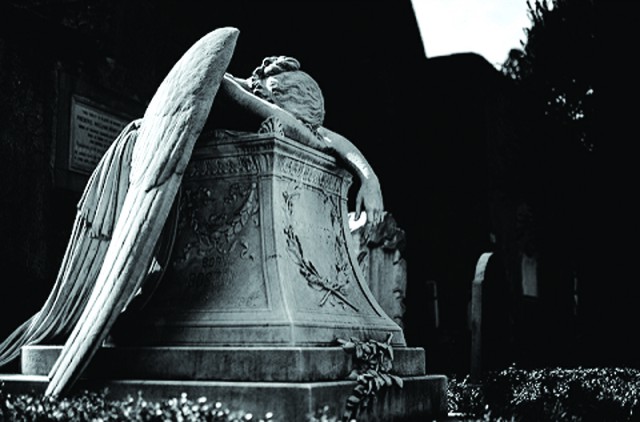
An exploration of the Italian cemeteries reveals that Italian graveyards are modeled as an extension to their well tended gardens and treasure-filled art galleries. Funerary decorations, in one form or the other, has been part of all cultures - the necropolis of Makli near Thatta being a fine example - but Italian cemeteries are a veritable feast of art. Most sarcophagi in there are made of granite or marble slabs that are so exquisitely grinded and polished that they are fit for adorning palaces. The headstones bear an image of the deceased with an inscription of date and place of birth and death. A stone flower vase is sometimes placed at the top ledger stone and is nearly always decorated with a bouquet of flowers.
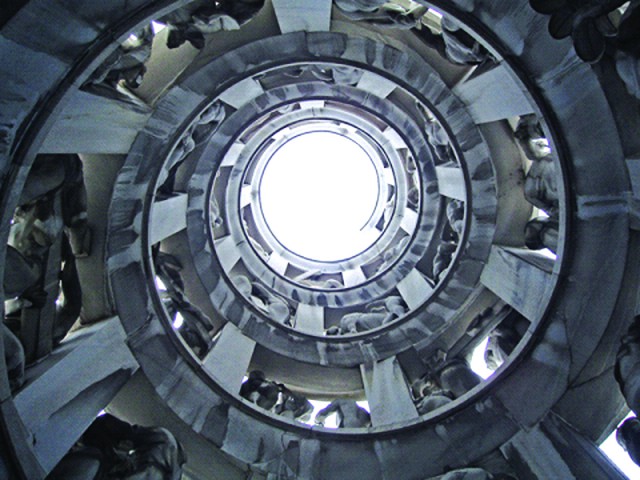
Most of the graves are adorned with statues. Many of these are life sized while others are of varying heights. Statues of winged angels in various sizes, forms and poses, representing the flight of the soul to heaven, are very common, as are those of Mary and Jesus. Busts of the deceased too are placed on some of the graves.
One of the most poignant sculptures adoring a tomb is in a Florentine monumental cemetery. It consists of a young girl in a white wedding gown standing beside a young man clad in a military uniform. The sight of a girl dressed for her nuptials, anchored on a grave, cuts a melancholy figure. The tale of the sculptures is that it was commissioned by a distraught mother whose daughter died a few days before her marriage and her young son, enlisted for army, was killed in war. Denied by a cruel fate the pleasure of seeing her daughter as a bride and her son as a soldier, she had their statues erected over their common grave in these costumes.
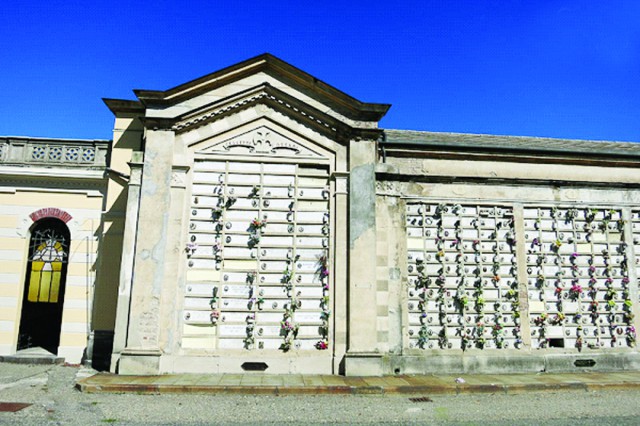
The Renaissance commenced in 15th-century Italy with rapid development of arts in the metropolis of Florence. A proliferation of artists emerged in the fields of painting, stone sculpture and metal casting. The art of marble sculpture had flourished in Italy during the Greco-Roman era but had decayed since the fourth century when the Roman Empire was ravaged by invading hordes. Meanwhile, Islamic civilization had religious injunctions against idolatry and, thus, discouraged sculpturing.
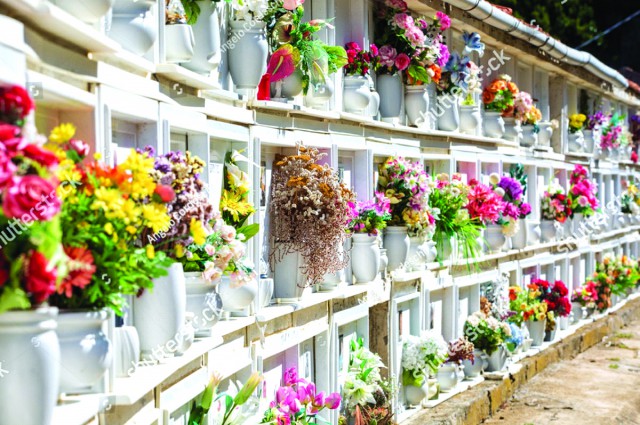
Artists in the cities of Northern and Central Italy not only revived this art, they attained new heights in their achievements. Marble and gold sculptures created by Florentine artists Michelangelo, Donatello, Benvenuto Cellini, Verrocchio, Ghiberti, and a host of others remain unsurpassed in finesse, conception and form.
Starting with statues adorning the residential, religious and public buildings, the fashion of stone sculptures filtered down to burial places. As Venice, Florence and Milan became rich in trade, the surplus wealth was used in patronizing artists. Some of this art work was meant to be placed at the graves, resulting in the creation of the many of the monumental cemeteries.
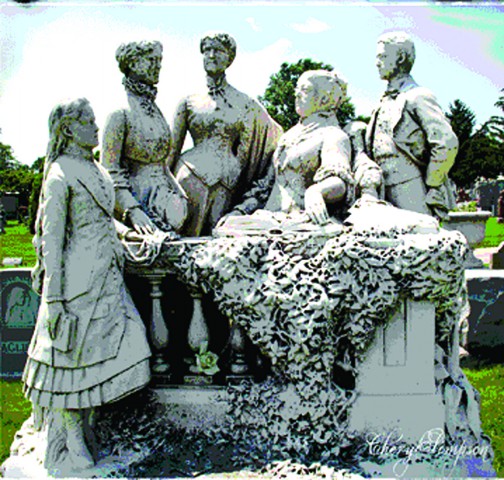
Italy hosts a number of monumental cemeteries. These are burial grounds where each grave is covered with marble, stone or granite slabs. The cemeteries of Genoa, Milan and Bologna have surpassed others in extravagant statuary. The spiraling tomb of Antonio Bernocchi, built in 1931-35 in the monumental cemetery of Milan, is one of the most intricate designs for a burial chamber. It is built like the ancient Tower of Babel, and is replete with statues all along its considerable height.
Vertical burial is something that we Muslims do not have. In this case, the coffins are not buried in the ground but entombed in niches in the walls. It’s similar to living – in this case being entombed – in multi-storied apartment buildings.
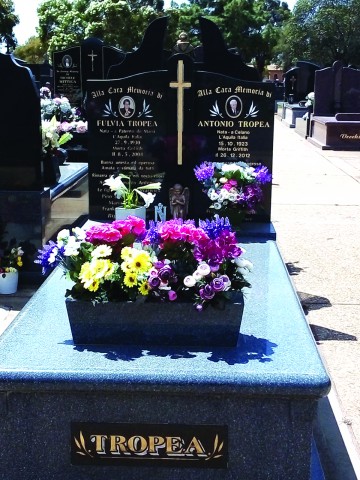
Multi-storied vertical cemeteries have been erected in many cities of the world and they are all grey drab structures. Italian vertical burial places, on the other hand are richly decorated family tombs within a cemetery. Normally, one outer side of the cemetery is reserved for these structures. The land is sold in blocks of around 400 square feet but can vary in size. Sealed coffins are stacked vertically in the walls like drawers. Some of these tombs have tall honour boards on the exterior side of the main door displaying list of numbered burial slots. The slots that have been occupied have the name of the internee while the empty slots are left blank. The arrangement appears very orderly, dignified and elegant.
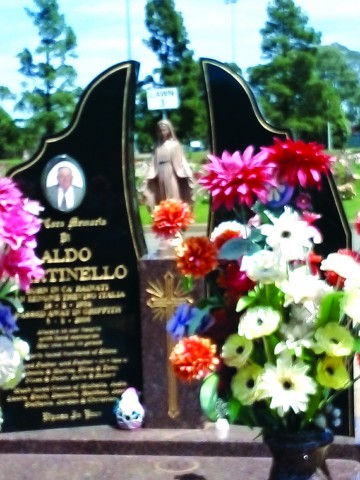
The Covid-19 pandemic is taking a tragic toll in Italy with over 70,000 deaths in the country so far. This is placing a heavy workload on the cemeteries during a very short spell of time. Whole new cemeteries have sprung up to cater for the high death rate. It is certain that the Italian artists shall find novel and creative ways of celebrating some of those who have passed away – in stone.
The author retired as a Group Captain from PAF and is now a software engineer. He lives in Islamabad and writes on social and historical issues. He can be reached at parvezmahmood53@gmail.com
The Catholic part of Griffith cemetery, that for most part is a burial ground for the Italians, attracts attention during the day due to the many artificial and fresh flower bouquets placed next to each grave, and during the night by several solar battery-powered lights illuminating scores of graves. Each grave is evidently visited often; a loving reminder that its occupant is not forgotten.

Most Italians are followers of Catholic branch of Christianity, which is expected considering that Vatican City, where the Pope resides, is located here. Additionally, Italy is the only European country where a major chunk of the citizens regard religion as very important in their lives. They also regard death as extension of life in another world, hence their motivation for adoring their graves, which become home for the departed.
As Catholics do not believe in divorce and literally follow the vow of ‘till death do us part’, married couples also like to be buried adjacent to each other. When one partner dies, the family procures two adjacent plots. Both graves are constructed in a similar manner. The deceased is buried in one and the other is reserved for the surviving partner. The headstone of the former is suitable inscribed while that of the other is left blank. Under some circumstances, siblings too are buried in adjacent or common graves. Such burials arrangements are a common sight in Italian cemeteries.

An exploration of the Italian cemeteries reveals that Italian graveyards are modeled as an extension to their well tended gardens and treasure-filled art galleries. Funerary decorations, in one form or the other, has been part of all cultures - the necropolis of Makli near Thatta being a fine example - but Italian cemeteries are a veritable feast of art. Most sarcophagi in there are made of granite or marble slabs that are so exquisitely grinded and polished that they are fit for adorning palaces. The headstones bear an image of the deceased with an inscription of date and place of birth and death. A stone flower vase is sometimes placed at the top ledger stone and is nearly always decorated with a bouquet of flowers.

Most of the graves are adorned with statues. Many of these are life sized while others are of varying heights. Statues of winged angels in various sizes, forms and poses, representing the flight of the soul to heaven, are very common, as are those of Mary and Jesus. Busts of the deceased too are placed on some of the graves.
One of the most poignant sculptures adoring a tomb is in a Florentine monumental cemetery. It consists of a young girl in a white wedding gown standing beside a young man clad in a military uniform. The sight of a girl dressed for her nuptials, anchored on a grave, cuts a melancholy figure. The tale of the sculptures is that it was commissioned by a distraught mother whose daughter died a few days before her marriage and her young son, enlisted for army, was killed in war. Denied by a cruel fate the pleasure of seeing her daughter as a bride and her son as a soldier, she had their statues erected over their common grave in these costumes.

An exploration of the cemeteries reveals that Italian graveyards are modeled as an extension to their well tended gardens and treasure-filled art galleries
The Renaissance commenced in 15th-century Italy with rapid development of arts in the metropolis of Florence. A proliferation of artists emerged in the fields of painting, stone sculpture and metal casting. The art of marble sculpture had flourished in Italy during the Greco-Roman era but had decayed since the fourth century when the Roman Empire was ravaged by invading hordes. Meanwhile, Islamic civilization had religious injunctions against idolatry and, thus, discouraged sculpturing.

Artists in the cities of Northern and Central Italy not only revived this art, they attained new heights in their achievements. Marble and gold sculptures created by Florentine artists Michelangelo, Donatello, Benvenuto Cellini, Verrocchio, Ghiberti, and a host of others remain unsurpassed in finesse, conception and form.
Starting with statues adorning the residential, religious and public buildings, the fashion of stone sculptures filtered down to burial places. As Venice, Florence and Milan became rich in trade, the surplus wealth was used in patronizing artists. Some of this art work was meant to be placed at the graves, resulting in the creation of the many of the monumental cemeteries.

Italy hosts a number of monumental cemeteries. These are burial grounds where each grave is covered with marble, stone or granite slabs. The cemeteries of Genoa, Milan and Bologna have surpassed others in extravagant statuary. The spiraling tomb of Antonio Bernocchi, built in 1931-35 in the monumental cemetery of Milan, is one of the most intricate designs for a burial chamber. It is built like the ancient Tower of Babel, and is replete with statues all along its considerable height.
Vertical burial is something that we Muslims do not have. In this case, the coffins are not buried in the ground but entombed in niches in the walls. It’s similar to living – in this case being entombed – in multi-storied apartment buildings.

Multi-storied vertical cemeteries have been erected in many cities of the world and they are all grey drab structures. Italian vertical burial places, on the other hand are richly decorated family tombs within a cemetery. Normally, one outer side of the cemetery is reserved for these structures. The land is sold in blocks of around 400 square feet but can vary in size. Sealed coffins are stacked vertically in the walls like drawers. Some of these tombs have tall honour boards on the exterior side of the main door displaying list of numbered burial slots. The slots that have been occupied have the name of the internee while the empty slots are left blank. The arrangement appears very orderly, dignified and elegant.

The Covid-19 pandemic is taking a tragic toll in Italy with over 70,000 deaths in the country so far. This is placing a heavy workload on the cemeteries during a very short spell of time. Whole new cemeteries have sprung up to cater for the high death rate. It is certain that the Italian artists shall find novel and creative ways of celebrating some of those who have passed away – in stone.
The author retired as a Group Captain from PAF and is now a software engineer. He lives in Islamabad and writes on social and historical issues. He can be reached at parvezmahmood53@gmail.com

